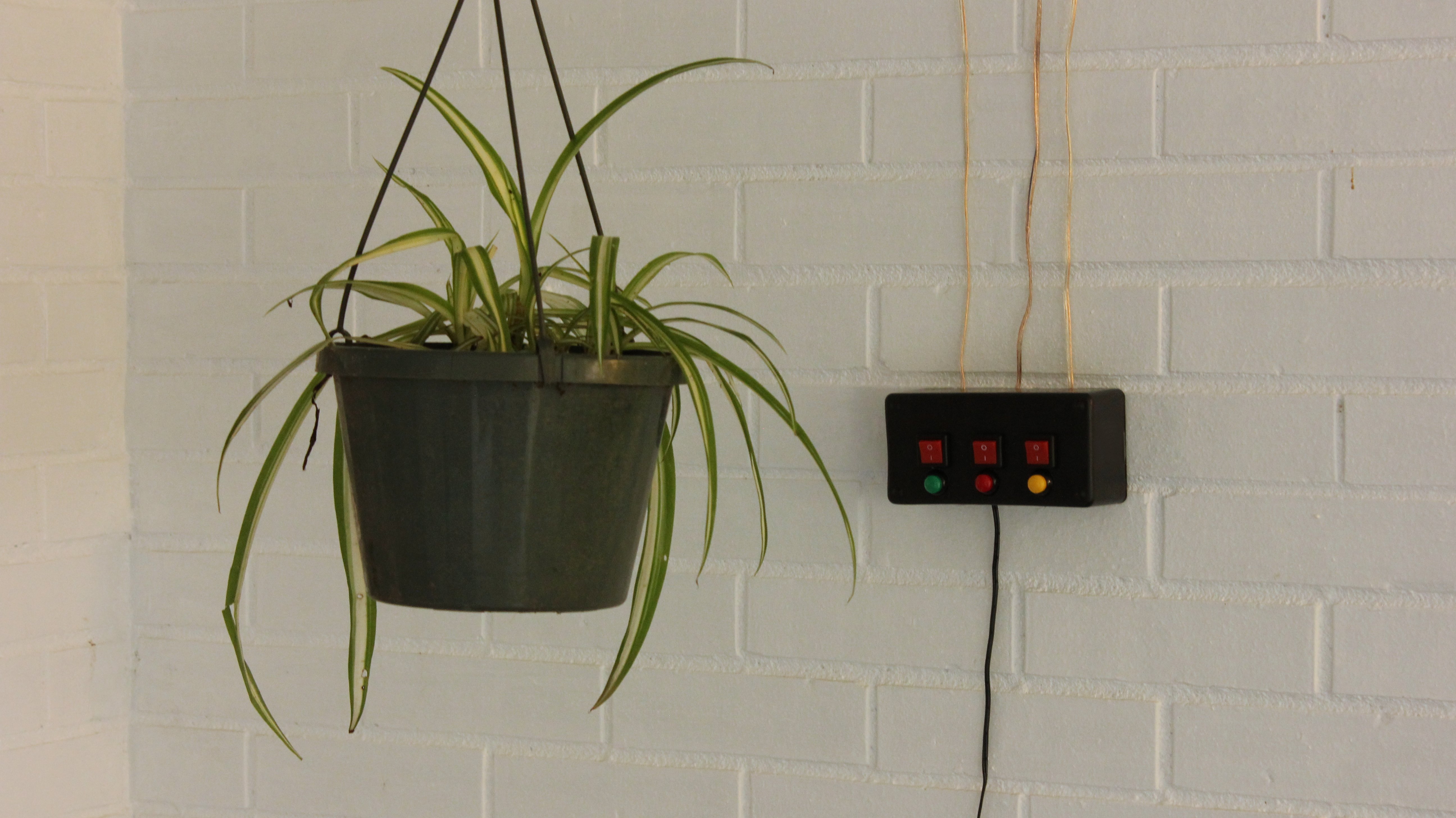Hanging plants are a great way to add some green around your house. But there are a lot of great locations for hanging plants that are just too inconvenient to utilize. For instance if you have really high ceilings, you don’t want to have to get up on a ladder every day to water them.
So I designed a simple system for raising and lowering hanging plants with an electric motor. That way you can raise them up to the desired height. Then whenever you want to water them, just press the button to lower them down to a convenient working height.





